

I know it can seem like an intimidating task to find someone to take your next trip with. But it doesn’t have to be. Let me show you how to decide who you’re going to be traveling with efficiently. Picking a travel companion has never been easier.
Perhaps you’ve never traveled with anyone else than your parents. That’s okay. But let me tell you, a whole new world will open up for you when you decide to do exactly that.
I decided to make this post because after some looking around on the internet, I couldn’t find any thorough, specific posts about this subject. I’m here to change that. You’ll be provided with a list of potential travel companions that you can choose from, based on what you need.
Still wondering who you should travel with? Let’s take a look!
The most basic (and probably also the most common) form of travel: going on a trip with your family. Parents love to take their kids somewhere, and the kids love to go somewhere with their parents.
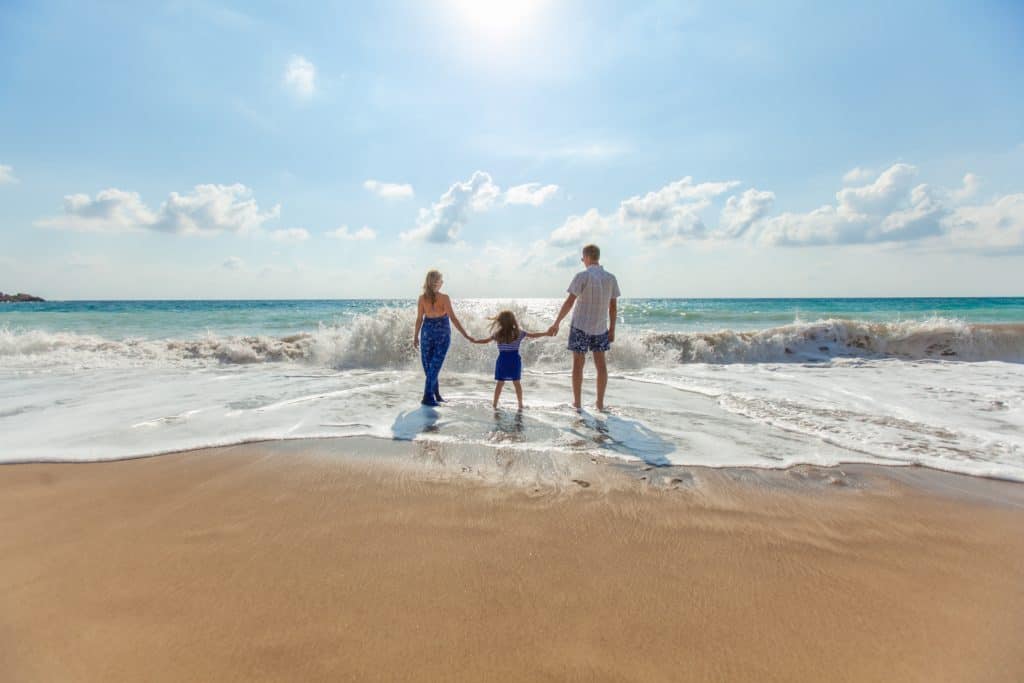
Photo by Natalya Zaritskaya on Unsplash
It’s riskless. You know having your parents (and siblings, if applicable) as travel companions is a safe bet. They know you better than anyone and there will be no surprises.
They’re reliable. Friends might promise that they’ll come visit you when you’re abroad for some reason, but most of the time, they don’t. Your family will always come through for you.
You get to know your family even better. They say that you don’t know someone until you’ve traveled with them. You get to see people from another perspective, and that’s no different when you travel with family.
You will have a lot of memories. At any time, you can think about how you hiked a mountain together, or you got lost in a city together. The trips you take will inspire a great deal of beautiful memories.
Destinations. You, as a youngster, probably want to go do some adventurous things while you’re abroad. Your parents might prefer an easy, safe destination. (Then again, they might not.)
Personal space. When you’re traveling with family, you spend a lot of time together. You’re basically going to be seeing each other all day, every day. If that’s not something you’re prepared for, you should consider traveling with someone else.
Friends are most likely among the more popular travel companions as well, and they have good reason to be. Traveling with them is a splendid way of testing how strong your friendship really is. If you’re not afraid of that, here is why you should travel with friends.
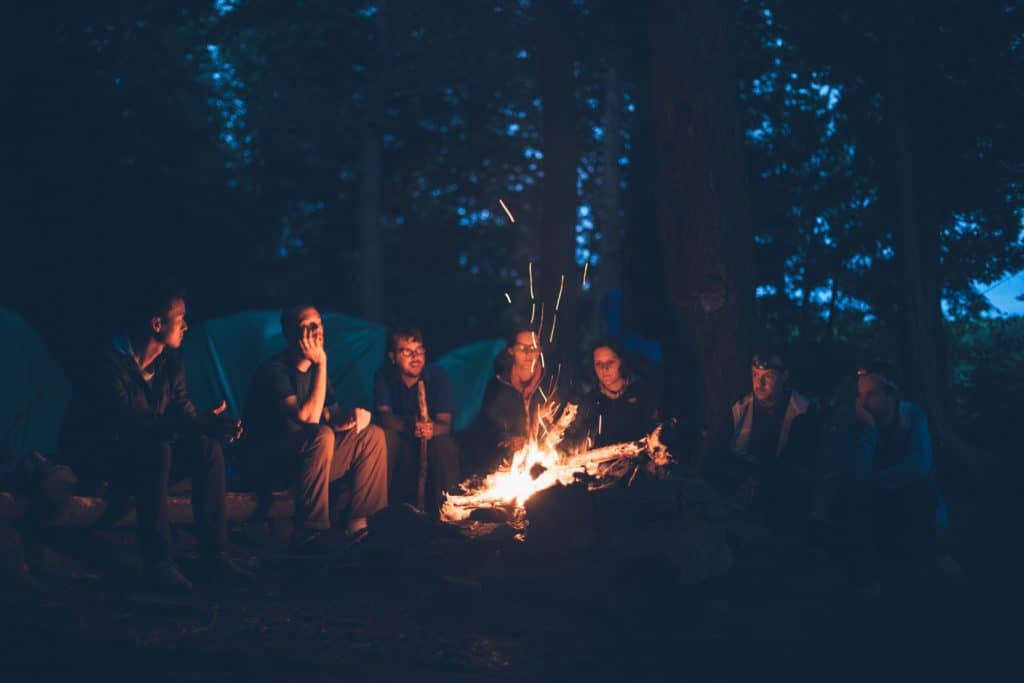
Photo by Mike Erskine on Unsplash
Freedom to choose. As opposed to traveling with family, your friends might want the same things in your trip as you. You might be able to go hiking, visit a monastery or trek through South America.
Good company. If you’re traveling with friends, you know for a fact that you’re going to have some great people alongside you.
You know what you get. This point kind of blends in with the previous one. Your friends are your friends for a reason. They’re a you know what you’re going to get type of deal.
Safety. It’s true. A group of friends abroad is less likely to get robbed or to have anything happen to them than a solo traveler or a couple chasing their wanderlust.
Isolation. When you travel with friends, you tend not to get to know – or even talk to – people who are not already in your friends’ group. That means you’ll miss out on a huge part of traveling.
Stressful situations. When you’re traveling with friends, your friendship truly gets tested. You might find yourself in situations you haven’t been in before, and you might have to make some tough decisions.
This category is nothing but an extension on the last one, really. Having your BFF as travel companion could be amazing, but it could also turn out to be a bit of a disaster.

Photo by Cole Hutson on Unsplash
Your friendship will grow. You’ll get to know each other even better than you already do. When you’re on the road together, you see your travel companion(s) in ways that you would never see them at home.
Happiness. Every time you think back to the time you went city-tripping with your best friend in some foreign country, you’ll find yourself smiling about little things that happened. Even when you’re not back at home yet, you’ll share the happiness with your best friend. And isn’t that what friendship is all about?
Teamwork. There’s always going to be something you suck at, but that doesn’t mean that your best friend isn’t awesome at it. If you’re truly good friends, you’ll complete each other in different circumstances and you’ll be a team if there ever was one.
Arguments. Most arguments that start while you’re traveling will stay with you for a long time. After all, you can always come back to that time you/your friend got you both lost in a bad part of town, or got scammed and lost all of your money.
Responsibilities. Either one of you could potentially be a more responsible person than the other, and that can lead to frustrations with the other one. If you are doing all the work and your friend is just leeching, you won’t like that.
Choosing your significant other as a companion on your trips can be a refreshing change of pace. Whether it’s your boyfriend, fiancee, husband or partner, here are some reasons why you should (or shouldn’t) travel with them.
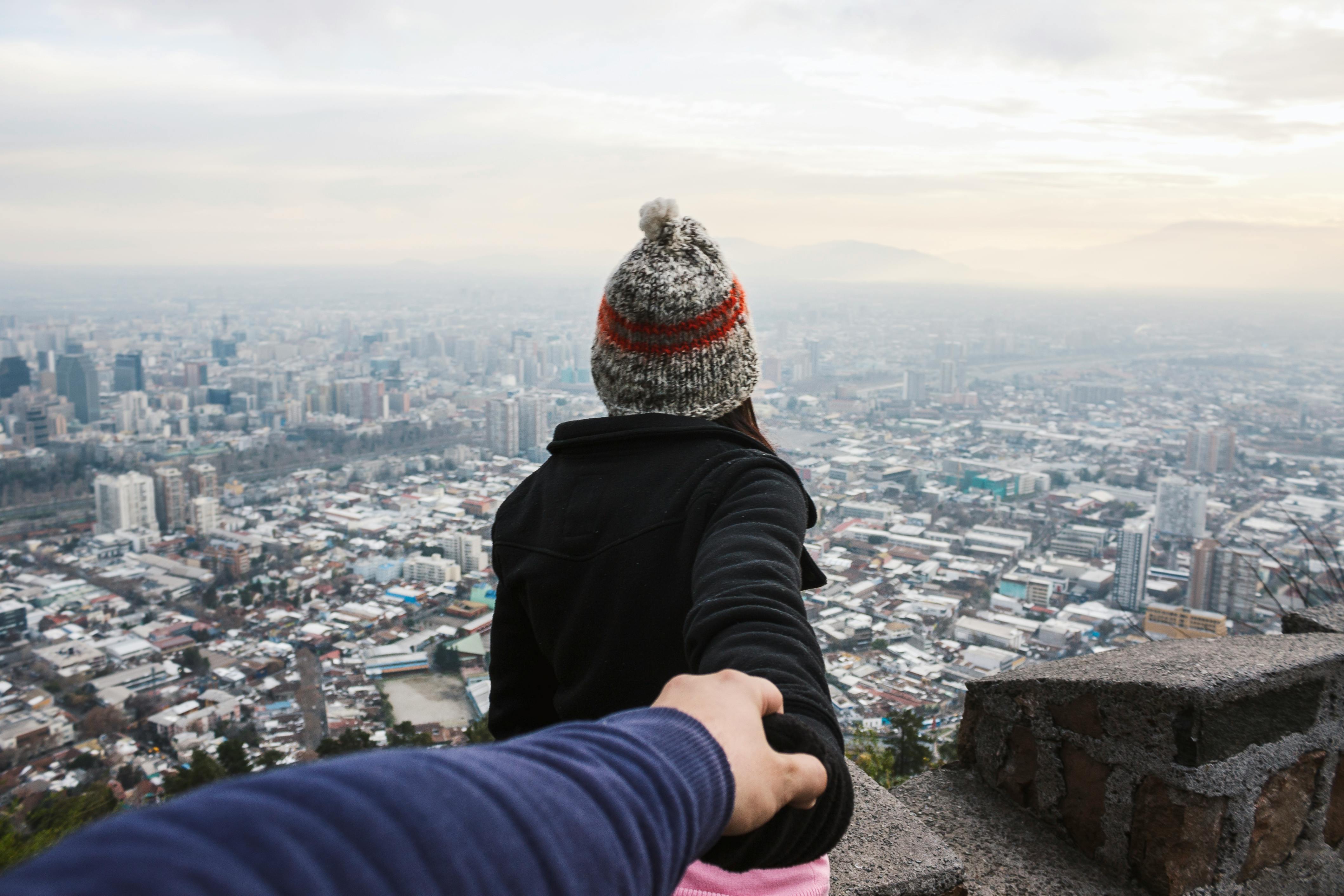
Image by Yuri Catalano
You’ll rediscover each other. Once again, travel is an excellent way to find out things you didn’t know about one another. How else would you figure out that your boyfriend speaks Conductor? (Yes, How I Met Your Mother, that’s a wink at you.)
It’s cheaper. Traveling in group is almost always cheaper than traveling alone, even if that group is just you and your SO. You can avoid pesky fees for booking rooms alone, you can share a private room at a hostel, … The possibilities are endless.
You can leave your comfort zone. Being in a foreign country with the one person you love more than anything in the world can really bring out another side of you. It can make you want to do crazy things you wouldn’t even consider doing back home.
It’s romantic. A weekend in Paris? A couple of days strolling through Venice? Nothing is more perfect for you and your significant other than a romantic getaway.
Your relationship will be tested. It’s almost guaranteed that you will get into some fight during your trip, be it a small disagreement or a huge blowout. These are the times when your relationship will only survive if it’s solid.
Cliché destinations. The destinations I mentioned before – Paris and Venice – are great and all. But if you are a couple that require something more adventurous, you might have to look a little bit further than that.
I know traveling alone defeats the whole purpose of finding a travel companion, but hear me out here. Solo travel is something different entirely, and I strongly believe everyone should give it a try at least once in their lives, even if it’s only to realize that you don’t like it at all and you never want to do it again.

Photo by Nina Uhlíková
You’ll learn a lot of lessons. You’ll be forced to solve problems you never would have gotten involved in otherwise, all by yourself. You get a creativity boost, because you have no choice but to be creative. You learn things that you would never find out if you don’t travel alone.
Absolute freedom. You can literally do anything you want to do. There’s nobody there you have to depend on, and nobody depending on you. If you want to skip some tour you had booked, nobody is going to tell you you shouldn’t.
Making new friends. When you’re abroad alone, you can make friends in a lot of ways. It’s very easy to meet new people and become friends with them when you’re traveling by yourself.
Experiences. Solo travel is very different from any other kind of travel. Although you might feel like you learned a lot from backpacking through South America with your friends, I can guarantee you’ll experience things more thoroughly.
You’re alone. The obvious disadvantage of having no travel companion is that you don’t have anyone to fall back on. Then again, as a solo traveler, you’re more approachable, so you might make friends more easily.
It’s more expensive. When you don’t have a travel companion, you might miss out on special deals, twin rooms, etc. Some hotels add a so-called single supplement: people who travel alone have to make up for the money they miss out on because the room is only being used by one person instead of two.
In the end, what it all comes down to is your personal preference. For some people, the disadvantages of traveling with friends won’t weigh up at all against its advantages. Other travelers will prefer being alone on the road time and again. You have to decide.
What do you prefer? City tripping with your parents? Or hiking in the mountains with friends? Let me know in the comments below.
As always, thanks for reading!
-S
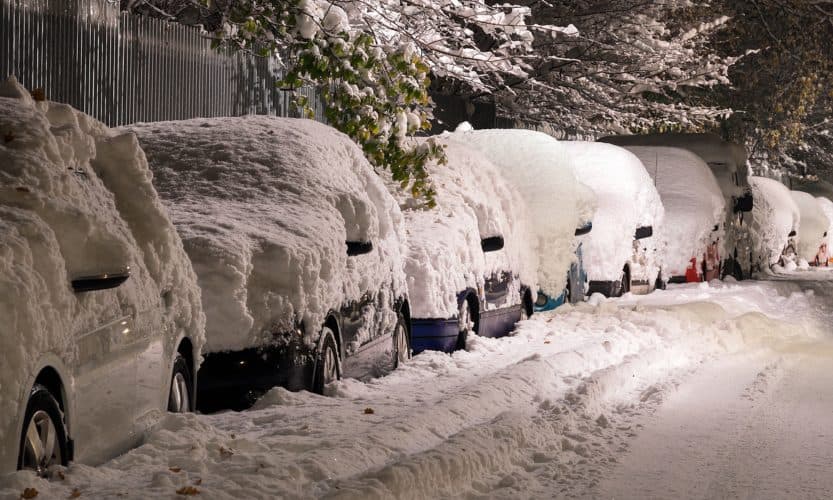
I wasn’t planning on writing another blog post before my Erasmus stay in Spain ended, which is in about three weeks. Then again, I wasn’t planning on being stuck in Ávila and spending the night here. Thank you, Spanish public transport.
Okay, so today was supposed to be the day that I flew back to Spain and then took a bus from Madrid to Salamanca. Badabing badaboom. But, of course, as my luck would have it, there’s some pretty heavy snow in Spain at the moment. This complicated my travel plans quite a lot. This is the story of how that happened.
Disclaimer: this post will be rather short and it won’t contain any pictures.
According to the original plan (plan #1), my dad drives me to the train station, I take two trains to get to Brussels Airport, where I catch a flight to Madrid. After that, a bus takes me from Madrid to Salamanca. By now, it should be clear that that’s not how it happened.
We had a family Christmas thing yesterday, so nobody was looking forward to driving me to the train station. Eventually, we decided that my dad was the person who had to get up at 6:30 to drive me. (Dad, if you’re reading this: thank you!)
So far, so good.
I managed to buy a train ticket before my train left the station, and I caught the train. Luckily, it was one of the newer trains in Belgium, equipped with an electricity socket. I say ‘luckily’ because – for some reason – my phone refused to charge last night. No harm done, because I was able to start charging my phone on this train.
I also watched two episodes of 11.22.63 (a show about an English professor who travels back in time to prevent the assassination of John F. Kennedy). I highly recommend you give this show a try if you’re into history and conspiracy theories.
This is where things started to go wrong.
Well, nothing too big happened. I didn’t miss my flight. It did leave about half an hour late, though. Presumably because of the bad weather conditions in Spain. This meant that the time that I had counted on for lunch (and to find my bus) was cut short, which started the avalanche of stress.
For lack of a better alternative, I ate at the first airport restaurant that I came across, which happened to be Burger King. Add to this the fact that I wasn’t even sure I was going in the right direction and you’ve got a recipe for disaster.
I had booked a spot on a bus from Madrid to Salamanca at 3 pm. After losing half an hour on the plane, I finished eating my burger and fries at around 2:30 pm, which gave me plenty of time to find out where my bus was supposed to arrive. And I did.
I went to the bus parking, and I started waiting for the bus.
This is where the public transport system of Spain started to fail me.
After waiting for the bus until 3:20, I saw people start to leave the bus parking, heading back inside (where it wasn’t as cold and it wasn’t raining). I obviously found it rather odd that the bus still hadn’t arrived, so I decided to check Twitter for any news.
And that’s when I found out about the snow crisis in Spain. This was the Tweet that informed me about the fact that all buses in Castilla y León (which is where I had to go) had been canceled until further notice.
Great.
Información sobre corte de servicios y carreteras por temporal. Servicios AutoRes. Día 7. Todos los servicios Castilla Leon y Galicia están suspendidos en la AP6. Disculpen las molestias.
— Avanzabus (@avanzabus) January 7, 2018
This is when the “Googling for viable alternatives on my phone, which desperately needs to be charged again” started. I looked at taxis, buses, trains, Blablacar, hitchhiking, … You name it, I probably considered it.
In the end, I decided to go with an updated plan (plan #2), involving another buttload of public transport.
I take a bus to Terminal 4, I take a train to Madrid Chamartín, I take another train to Salamanca, and that’s it. Can you guess whether or not this plan worked? (It didn’t)
It started out fine, though. I feel like I owe you a bit of an explication as to what Terminal 4 and Chamartín are. Let’s see: Madrid Airport (full name: Aeropuerto Adolfo Suárez Madrid-Barajas) consists of two buildings. The main building houses terminals 1, 2 and 3, and it is (obviously) the largest of the two. The second building takes care of terminal 4, and it’s smaller and newer (built in 2006) than its big brother.
When my plane landed, I was in the big building, and my bus was supposed to be there as well. Upon finding out that it wasn’t going to come, I found out that the train station was located in the other building, so I had to take a transfer train (which was free, thank goodness) to T4.
The transfer train took me to the T4 building rather quickly. This was when I was introduced to the wonderful world of Spanish trains, Renfe. I bought a ticket to get me from the airport to the main train station of Madrid, also known as Chamartín.
This was rather stressy, as I couldn’t find any way of finding out whether or not I was waiting at the right train track. Turns out I was.
Once I arrived at Chamartín, I started looking for a train to take from Madrid to Salamanca. The ticket machine told me that every direct train between those two cities had been fully booked, so that wasn’t an option any more.
My dad recommended that I take a train to Ávila, and then transfer to another train to Salamanca from there, which was what I was about to do anyway.
I bought a ticket to Ávila, and I got on the train.
Now, I’ve arrived here, and I’ve figured out that there is no way I’m making it to Salamanca today. All the trains had been booked again, the buses are still not driving, there are no Blablacars and a taxi would be way too expensive.
I informed my family, and they told me to stay here and take the train tomorrow. My dad booked a hostel room in my name (again, thanks!) and he gave me the address.
I’m now in my bedroom as I am writing this blog post. I’ve just gone out for dinner at a Chinese restaurant and I feel like I’m about to fall asleep any moment now.
I’ve booked a seat on a train bound to Salamanca tomorrow morning. It might be a little tight, because the train leaves at 9:15, and breakfast in this hostel only starts at 8:30. And it’s still about a 15 minute walk to the train station. We’ll see how it goes.
With a little bit of luck, I’ll be in Salamanca by lunchtime tomorrow. I’ll be sure to keep you updated.
Thank God for public transport. Right?
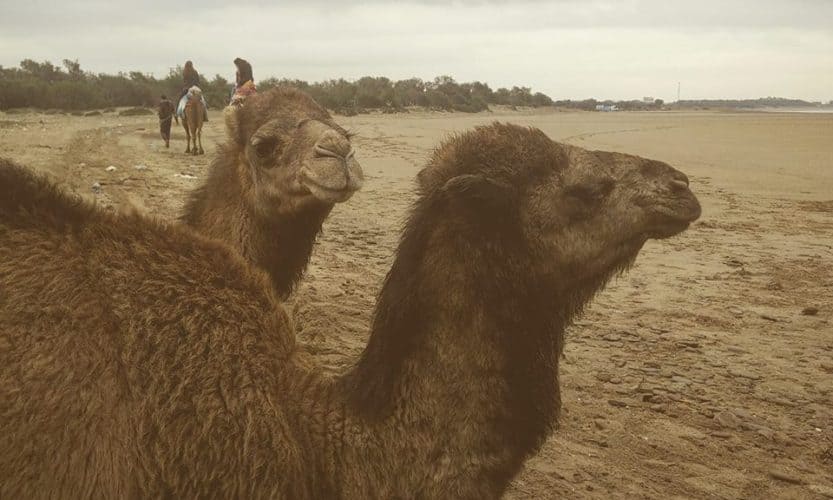
So it finally happened. I traveled outside of Europe. Admittedly, Morocco is probably one of the closest countries to Europe you could visit, but it was still a wonderful, exciting adventure. Being in an exotic country with a culture that is vastly different from your own can really make you think about life.
Disclaimer: this post will have a LOT of pictures. And their quality will be terrible, for which I sincerely apologize. However, I bought myself a decent DSLR camera for Christmas, so expect some very nice pictures in the following blog posts.
Let’s get this show on the road.
You might think getting to Morocco is easy if you’re coming from Spain. On the one hand, you’d be right. But, of course, on the other hand, you’d be wrong.
Getting to Morocco was easy in the sense that we didn’t have to take a plane to get there and we didn’t have a lot of problems crossing the border. The hard part was trying to get some sleep on a bus between 10 pm and 6 am. Yes, I do realize that’s a very easy thing to do for some of the more seasoned travelers out there, but believe me, it’s harder than it sounds.
The trip I took was one that was organized by SET (Salamanca Erasmus Trips), a company that specializes in creating trips for Erasmus students in Salamanca. I must say, they did a great job putting it all together.
Traveling with a group of 60 students implied that we had to take the bus to a lot of places. Although the long bus rides were one of my least favourite parts of the trip, I do realize that there was little to no alternative for getting everyone around at a reasonable price.
After eight hours of suffering in silence on the bus, we arrived at Algeciras, where we were to take the ferry down to Ceuta.
So, we finally reached the south of Spain. Algeciras. This is where the passport administration started. Each and every one of us had to fill out two very non-official looking forms to be able to enter and leave Morocco when we were supposed to. Luckily, there were no big problems here. Nobody forgot any essential documents and we eventually managed to board the ferry.
The ferry ride went very smoothly (aside from some people almost getting seasick because of the boat’s swinging) and we disembarked in Ceuta, an autonomous city along the north coast of Morocco which is still a part of Spain. Thanks to this, it was much easier to deal with the ferry first and the passports and border control next.
Either way, there wasn’t really much to do in Ceuta. We had some free time to wander around, went to a vantage point to get some good looks at the entire city and we ate paella and drank sangria. It was a jolly old time.
Well, now we are. Our first stop after leaving Ceuta (and spending another two hours on the bus) was Tetouan. During the bus ride to Tetouan, we met our local guide. I’ve forgotten his name, because I’m writing this blog post a week after the trip (as usual), but for the sake of the story, we’ll call him Mohammed.
Mohammed was a very peculiar guide. His Spanish was very respectable for someone whose first language is Arabic (I know that because I heard him yell at someone for offering me drugs). He was a very kind man. He called out ‘familia’ when he wanted the group to get together and listen to his explanations. However, he did believe in some of the more extreme practices of Islam. For example, he believed that men were superior to women and that homosexuality was an illness.
When we heard him say these things in the bus, we were all a bit taken aback, but we realized that that was all this guy knew and that he’d be our guide for the next four days so we’d have to behave. I know it seems a bit backwards, but that’s the way it went down.
Ok. Now we’re 700 words into the blog post and you haven’t seen a single picture, even though I said that I’d show you a lot of pictures. Well, let’s see what we’ve got.
Spanish people refer to Tetouan as “la paloma blanca” – the white dove – because of the many white buildings in the city centre (Medina). We mostly strolled through the little alleys, passing street vendors and seeing some amazing architecture and some very remarkable things.
The houses in the Medina were very densely squished together and it seemed like they were stacked on top of one another in some parts of the city. It felt very fulfilling to see the way their life and culture differed from ours.
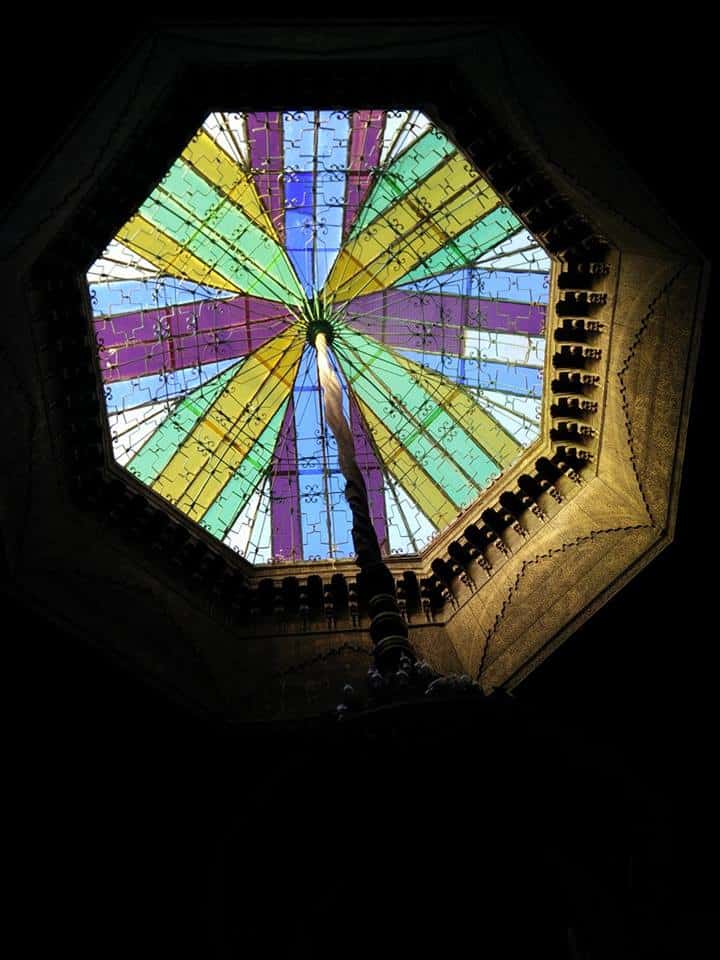
The first thing we visited was the Jewish neighbourhood, where the street was filled to the brim with people selling fruit, vegetables, nuts, spices and more.
(This ‘street market’ and more can also be seen in my Morocco travel video!)
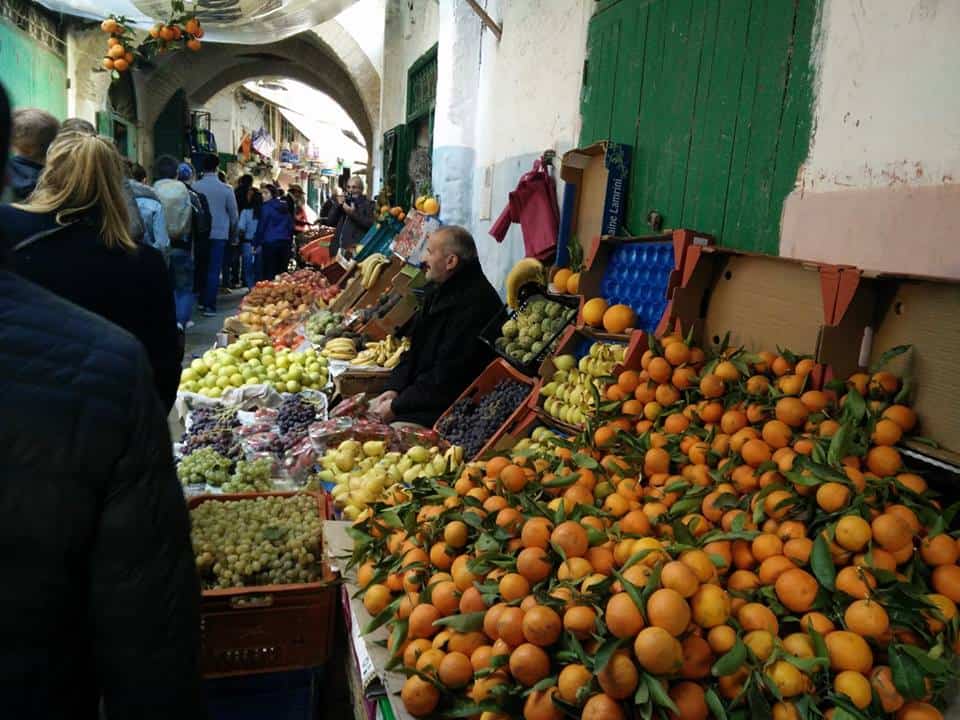
Of course, seeing as it was a Jewish neighbourhood in a big city, there were also some streets that had an abundance of shops that sold diamonds and other gems – but we were told that the prices were similar to those in Europe.
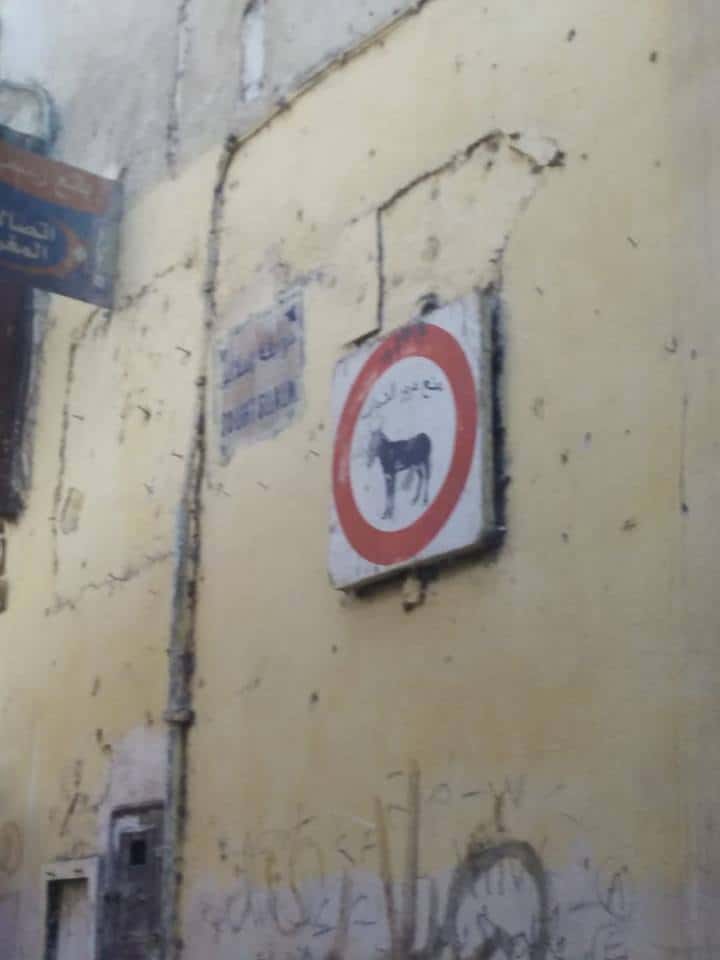
One of the funniest things we saw on this first day was this street sign, prohibiting donkeys and other cattle from entering a street. This felt very strange to us, seeing as donkeys don’t normally walk on the streets carrying goods in Europe.
Either way, we went back to the hotel after this walking tour through the Tetouan Medina, allocated roommates and we got some free time before dinner. After that, everyone went to bed satisfied and happy.
Let me tell you. I had the most amazing night in Tetouan. I know people usually say that after they’ve gone out and had a lot of fun, but not me. I’m a lazy bum, so I thoroughly enjoyed having a good night’s sleep. I’m sure you can understand, given the fact that I’ve been sleeping in a pretty terrible bed for the last three months.
Anyway, moving on. We got up at 8, went for breakfast in the hotel restaurant, cleaned up, made our bags again and left for Chefchaouen at 9. This was the city I was most looking forward to, because after some research on the internet, I had concluded that it must be amazing.
Prepare yourself for an overload of blue-looking pictures, and don’t say I didn’t warn you.
As soon as you see one picture, you’ll realize why this city is a tourist attraction and why people often call it the Blue Pearl. I’ll start you off with what I think is the prettiest picture I took while I was there.
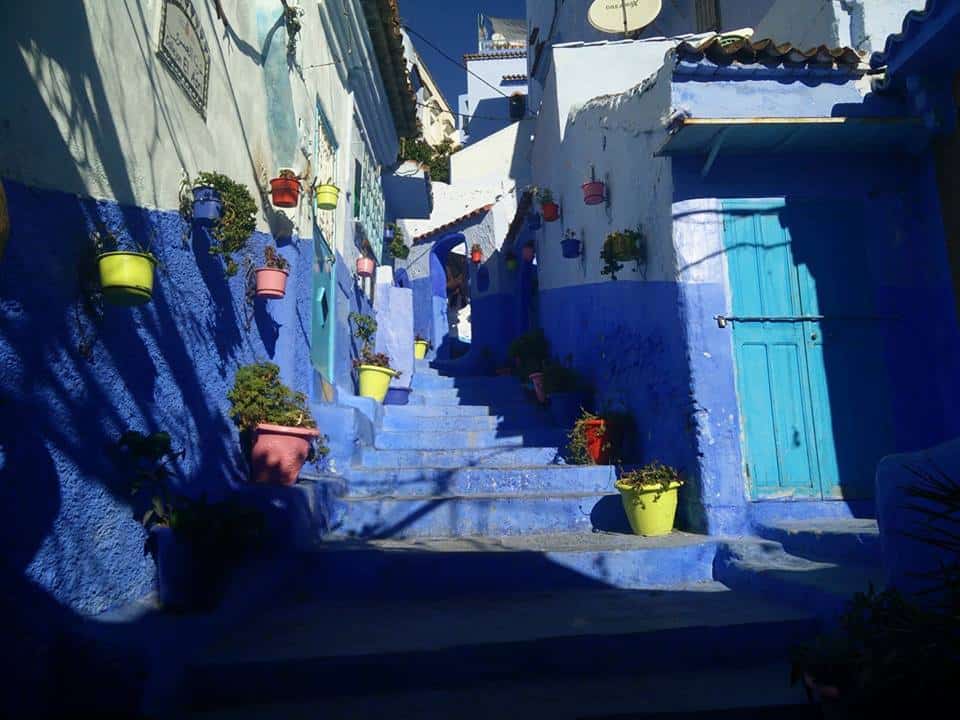
I mean. I know the actual quality is bad, but isn’t this magical?
Fun fact: nobody really knows why the walls of Chefchaouen are blue, but there are some theories. The most popular theory is also the most boring one: blue paint keeps the mosquitoes away. Other theories state that the blue came with the Jews when they were hiding from Hitler in the 1930s, and that blue symbolizes the sky and heaven and serves as a reminder to lead a spiritual life.
When I was expecting this visit to be the absolute highlight of our trip, I was not wrong. I loved walking through the blue streets, finding something new around every corner. The things people sold looked carefully crafted and actually high-quality.
As you can see in the photo gallery, there’s also a vantage point to see the entirety of the city. There’s an entire pathway carved out just to get people to it. Just head towards the mosque on the top of the hill and you’ll be golden.
Also, small bonus for animal lovers: there are literally hundreds of stray cats wandering around Chefchaouen. I’d be very impressed if you spent a day here and didn’t see at least one cat or kitten.
Our lunch in Chefchaouen consisted of tajine, a traditional Moroccan dish (which we ate in a traditional Moroccan restaurant). Hooray for traveling like a local!
After this, we were on our way to Fez, the last big city of our Moroccan trip.

First off, I’ll start by saying Fez and Fes are the exact same city. The reason why there are two different spellings is because the name of the city was transcribed from Arabic (فاس).
Right. Fez is the second-largest city in Morocco, second only to Casablanca (which boasts an impressive 3.3 million inhabitants). There’s a very lively debate about whether or not Fez is the most beautiful city of Morocco, competing for that spot with Marrakesh.
I must say, Fez did not impress me very much. It was a fun place to wander around and get lost in the 9,000 tiny streets, but the blue streets of Chefchaouen were a lot more impressive to me.
Of course, I’m not saying you shouldn’t go to Fez. It’s definitely worth a visit, and I thoroughly enjoyed visiting little shops where products were still carefully hand-made. We visited three shops where the owners/workers explained to us how they crafted various products.
We also visited the Chaouwara Tanneries, where top-quality leather is produced and coloured. When we got to the rooftop, where we had a vantage point to see how it all went down, we were all given a strain of mint, to keep the smell of the hides away. (I didn’t really understand the concept of this mint, and I didn’t hear the explanation. I ate the mint.)
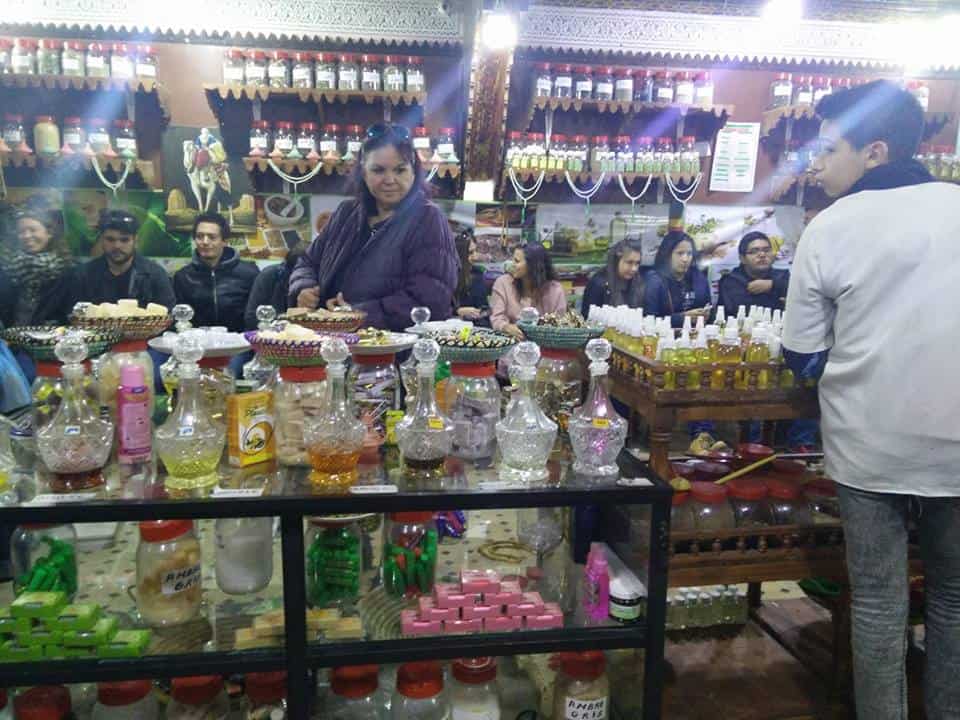
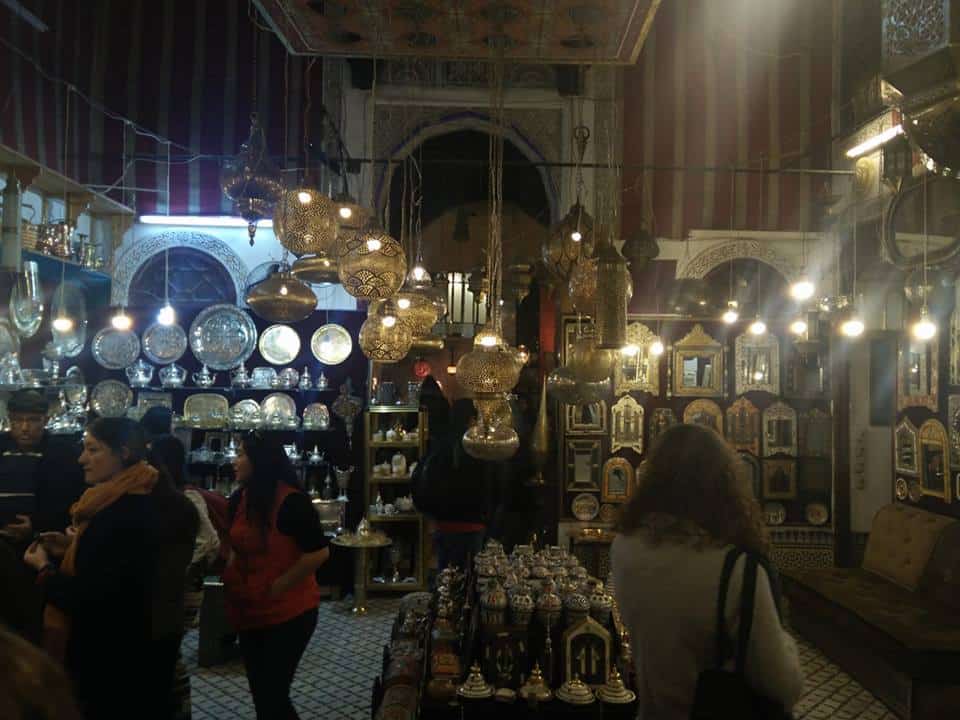
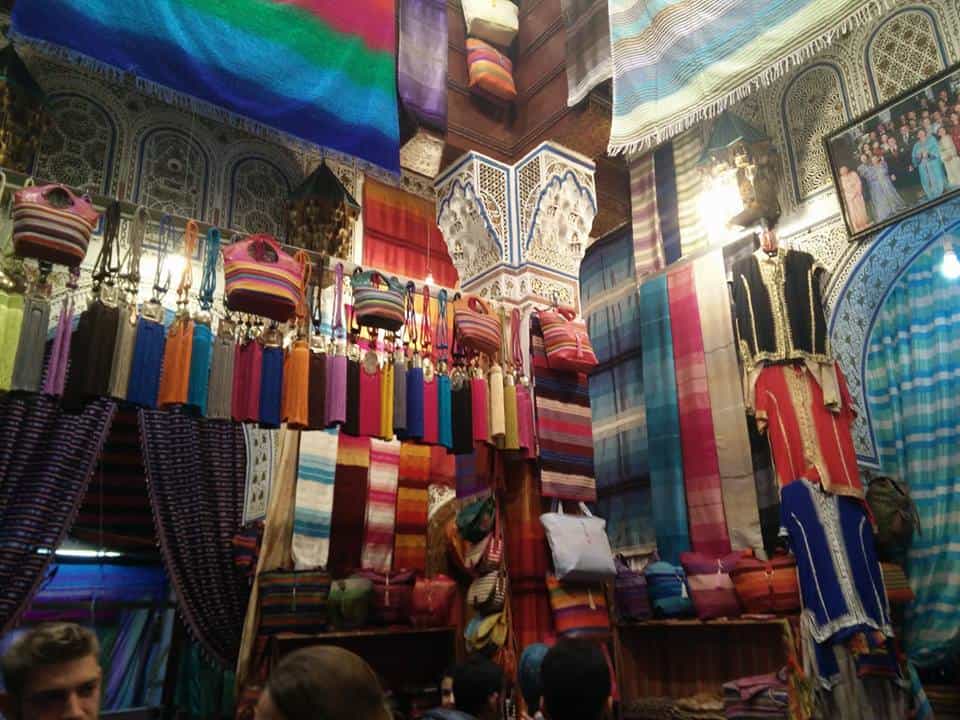
One of the main tourist attractions in Fez is the royal palace. That’s to say, the entrance to the royal palace. The grounds themselves aren’t actually open to the public, but the entryway is impressive enough.
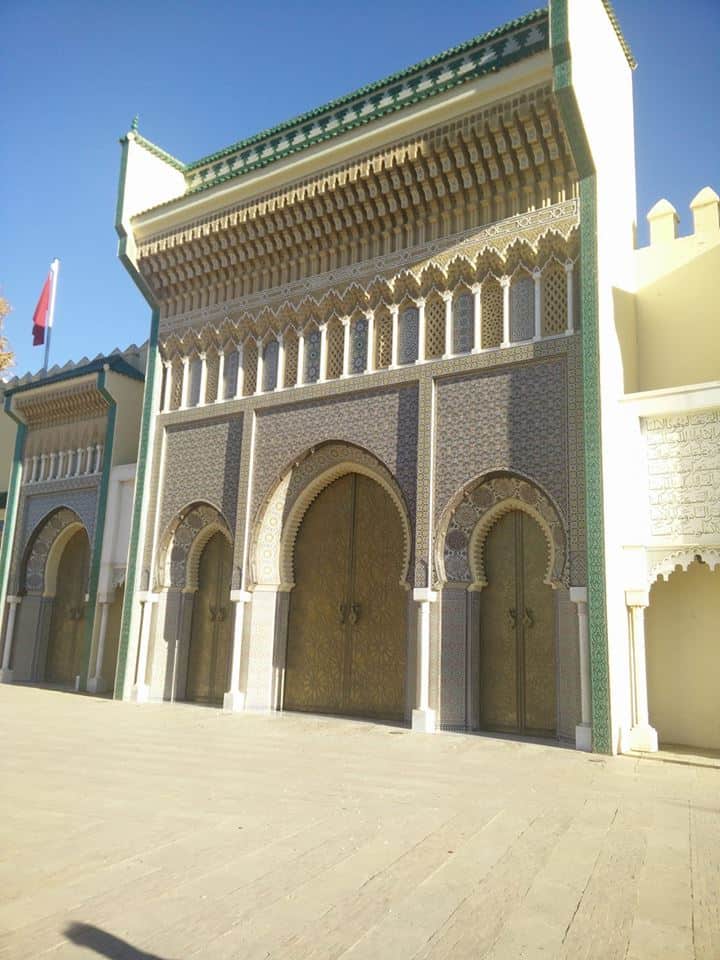
We got an afternoon off in this city, and we used it to wander around the Medina and discover the countless street markets. It felt like the entirety of the city centre was made up of people selling clothes, food, spices and other various things. It was an experience that you probably wouldn’t find anywhere in Belgium.
That night, we had the option to experience a traditional Moroccan dinner with a folklore show, involving a belly dancer, four men playing music, and a magician with very questionable entertainment skills.
After this show, we went back to the hotel and prepared for our last day of the adventure.
We left Fez at 8 am, to make sure that we still had some of our day left to experience Asilah. Well, that didn’t happen. Our bus was a little late and we arrived in Asilah later than we were supposed to, which meant that we had an important decision to make. Either we used our free time to explore the city, or we used it to have lunch. We decided to go for the latter, seeing that we’d spend the rest of the day – and the night – on the bus.
My friends and I went into the first decent-looking restaurant we encountered, and it turned out to be a good call. We all had tajine or couscous (both typical plates for Morocco) and it was very tasty. The only problem was that we didn’t all get our food at the same time.
After having dinner, we all met at the bus – which left a couple minutes late again, because how else could it have gone – and went on our way to the camel outpost.
Well, yes. We didn’t go to the Sahara desert, but we did get to see camels and dromedaries (you know, camels with one bump).
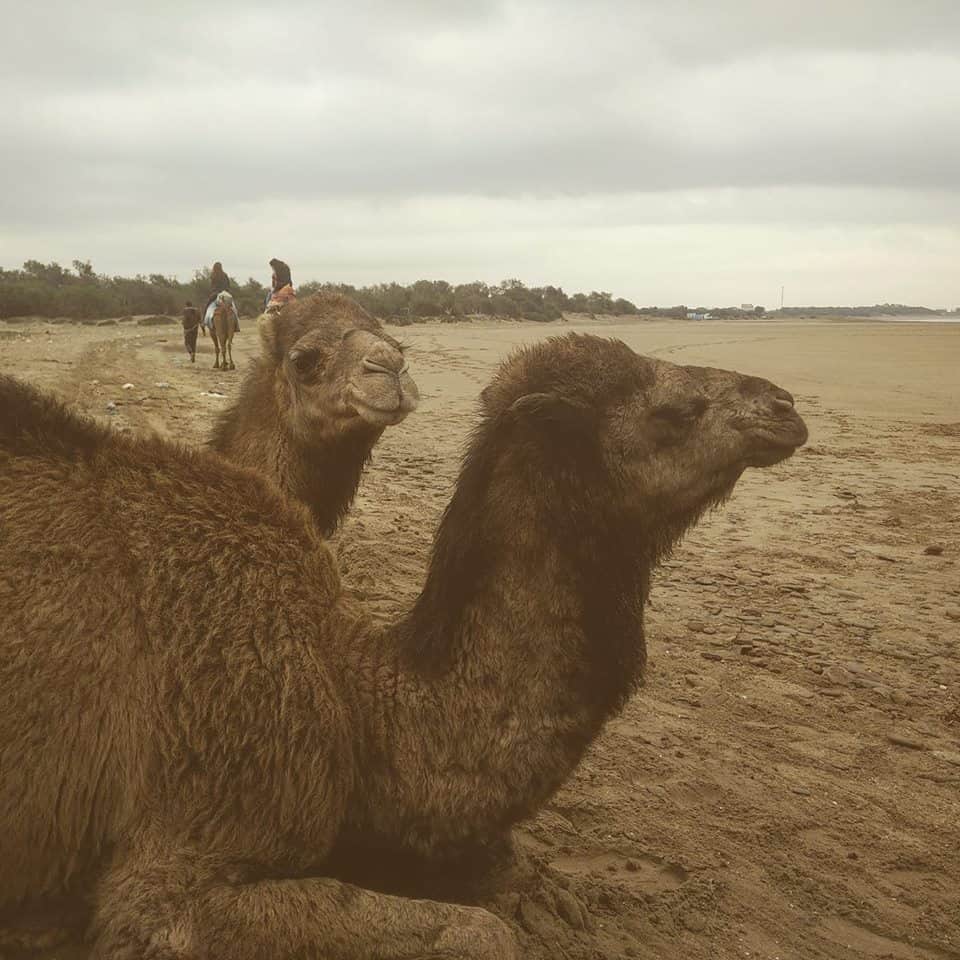
I actually got to ride a camel as well, but I’m not going to do that ever again. Not because it wasn’t fun (because it was), but because I could very clearly see and hear that the animals were in pain from constantly having to kneel down to carry people.
That being said, I’m glad I’ve had the experience of a camel carrying me around. You can see this in my travel video as well, by the way.
Sadly, this was the last stop of our adventures in Morocco. After our time at the camels, we hopped on the bus again, prepared for the long journey that was still ahead of us.
Luckily, everything from here on out went smoothly. I even got my first stamps in my passport, even though I was told I wouldn’t get them.
We took the ferry back to Spain, drove from Algeciras up to Salamanca and arrived around 6 am.
In conclusion, even though I was only there for a couple of days, I feel confident saying Morocco is a beautiful country you should definitely consider visiting sometime. Their culture is so vastly different from western countries that you’ll see some eye-opening things.
I’d consider adding the Sahara desert to your itinerary, though. I wasn’t there myself, but I’ve heard from my friends who were that it was very much worth it.
I hope you all enjoyed reading about my time in Morocco and I’d like to apologize for the long wait between my actual holiday and the release of this blog post.
Thanks for reading!
-S
PIN IT!
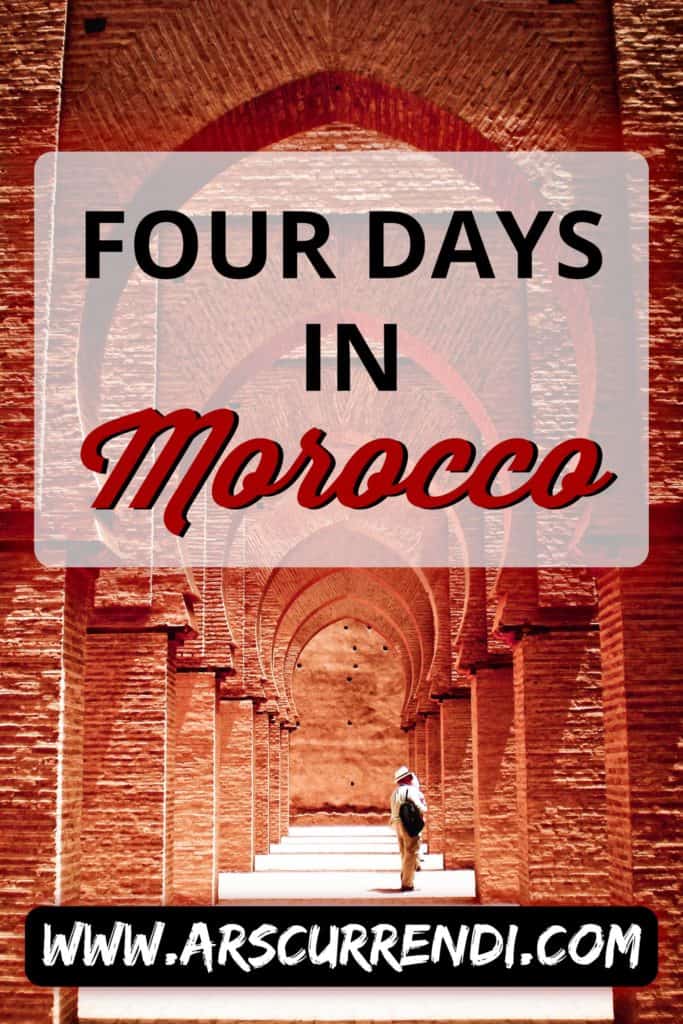
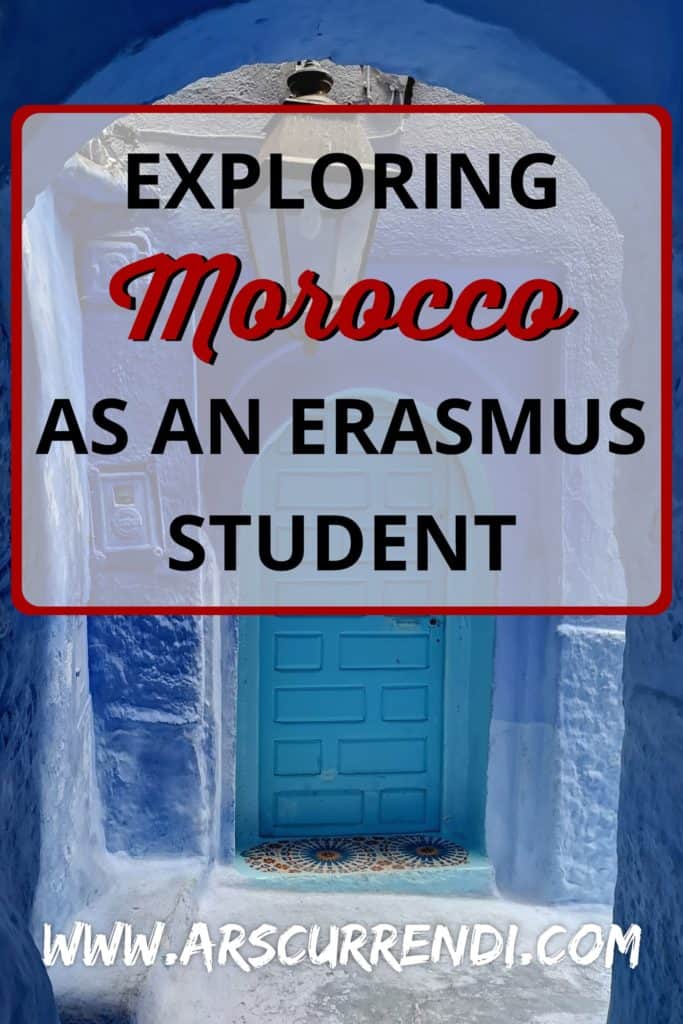
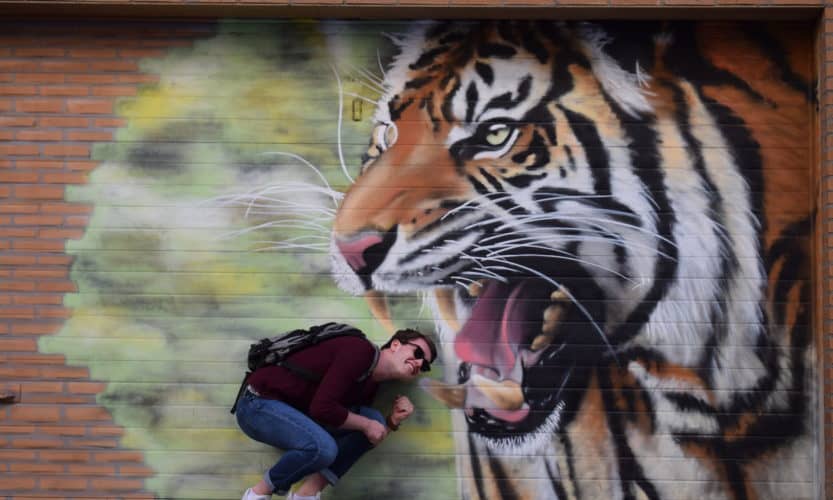
If you don’t live in Salamanca or know anyone who lives there, chances of you having heard of the Barrio del Oeste are pretty slim. But hey, isn’t that what I’m here for? In this post, I’ll be showing you the beauty that is this neighbourhood, with its funky graffiti and cute coffee shops.
After some careful planning, my friends and I got together for an afternoon of wandering around the Barrio del Oeste.
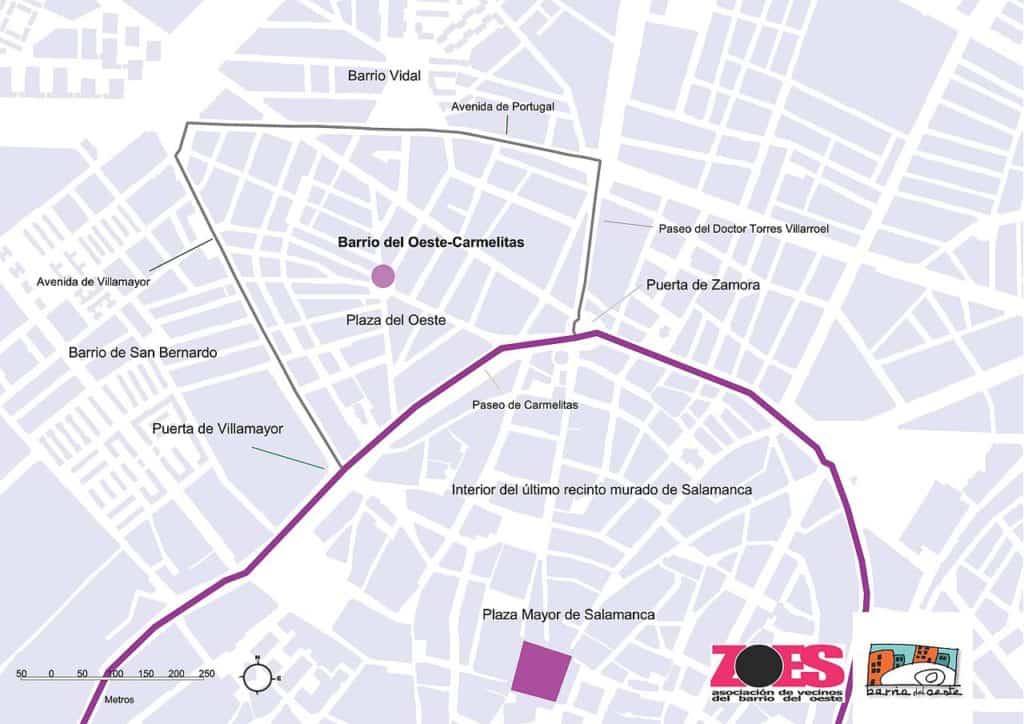
The great thing about this neighbourhood is, obviously, the graffiti. There’s at least one piece of graffiti on every single street (or, at least, so it seemed). That’s the main reason why it was so much fun to just wander around. You don’t even need to have any idea as to where you’re going.
The fact that all of this graffiti was made by young artists – with permission of the city – just makes it even better. The project even got its own website, on which you can see every piece of graffiti that makes a part of the project. (It’s in Spanish, but that shouldn’t stop you!)
For anyone who’s too lazy to check out the website, who’s not coming to Salamanca any time soon or who just can’t be bothered to do anything other than scroll, here’s some pictures we took while we were there.
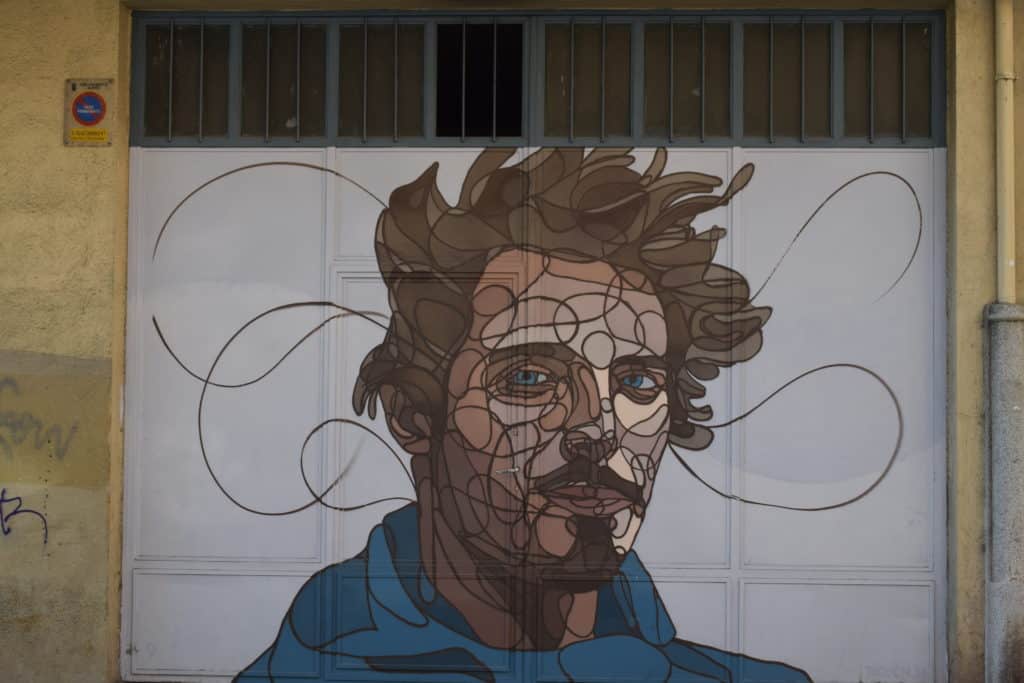
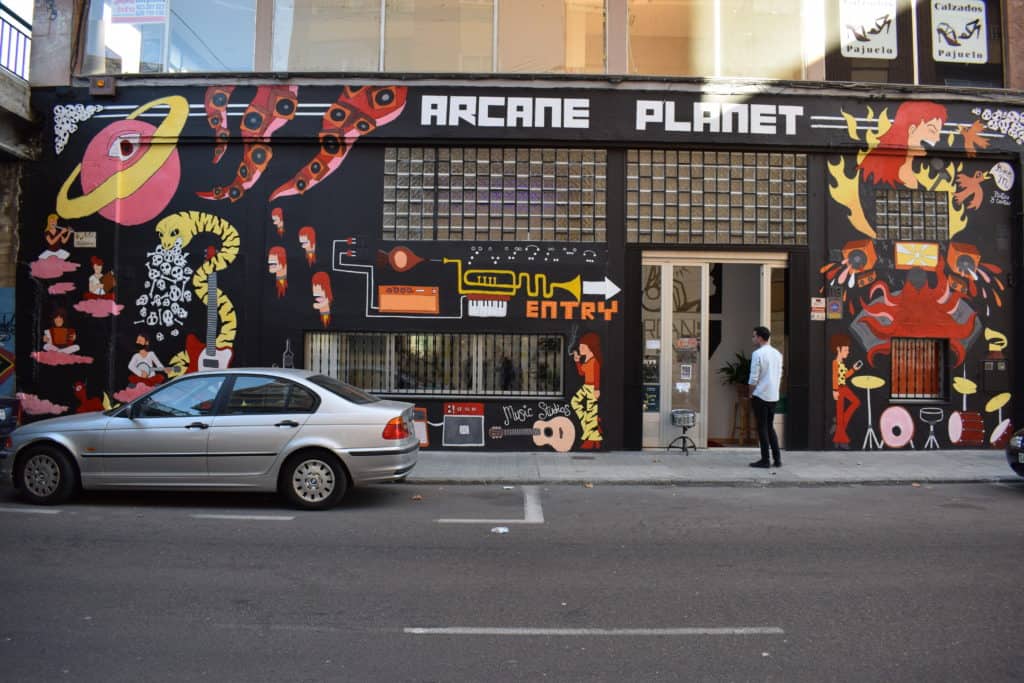
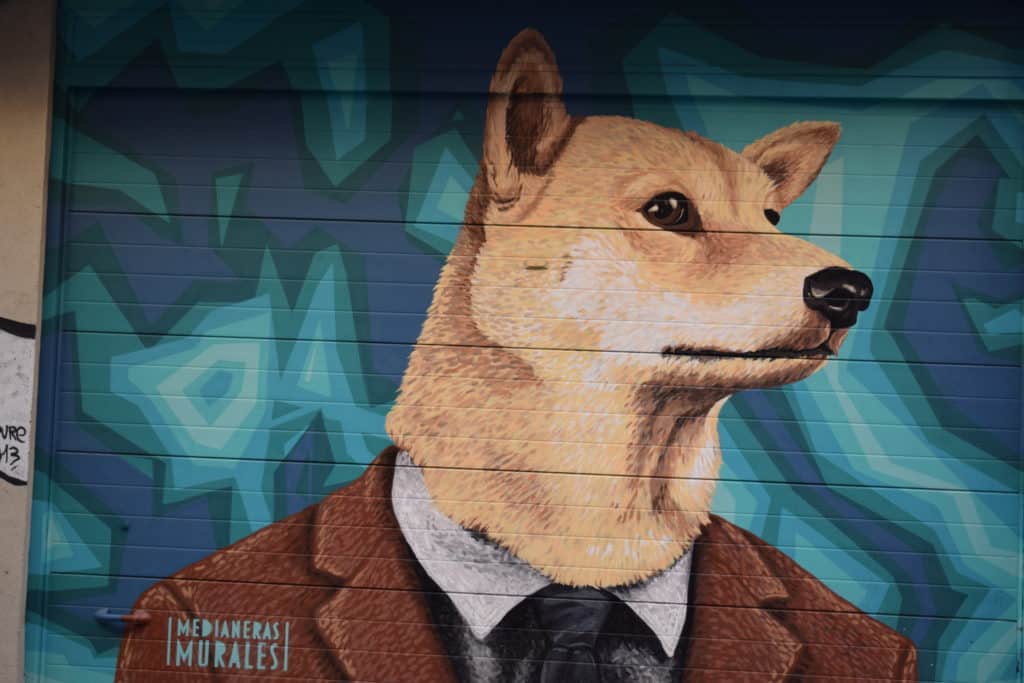
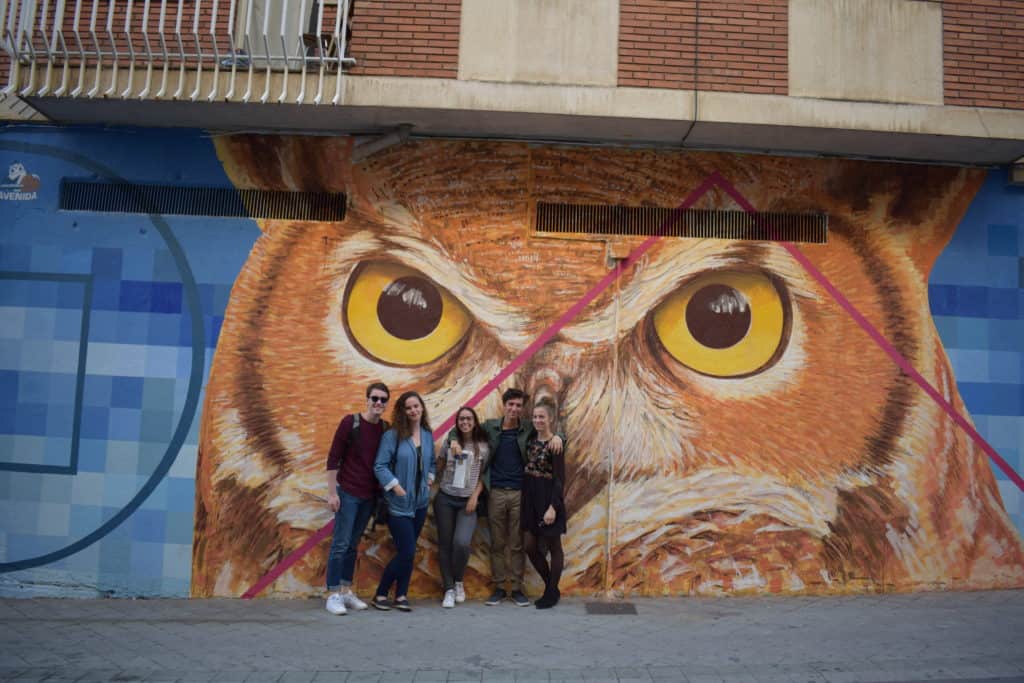
As if all of that wasn’t enough yet, there are quite some works where you can interact with the art. If you need any really cool pictures for Instagram, look no further. (Be creative: find new ways to interact with the graffiti and send them to me on Twitter or Instagram!)
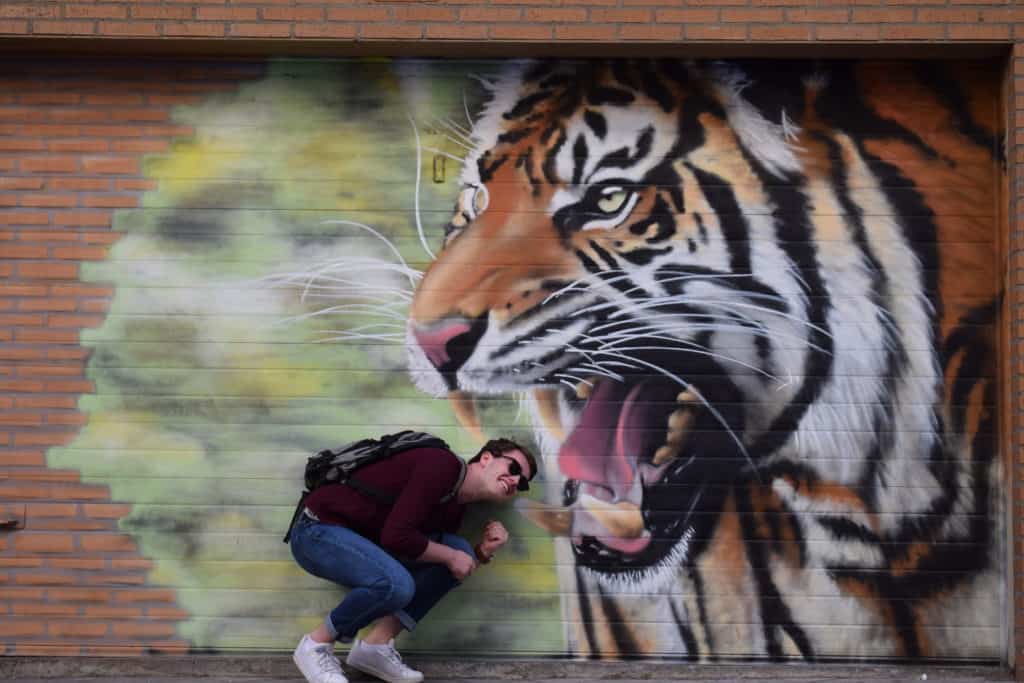
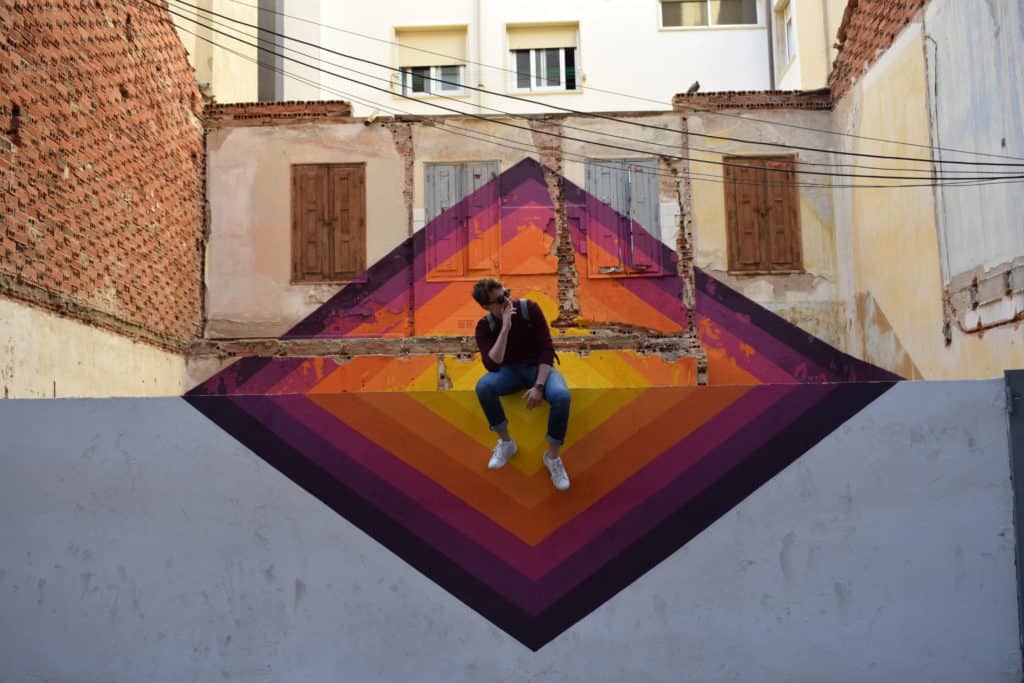
All in all, we had a fantastic day at Barrio del Oeste. I’d say it’s definitely worth coming to Salamanca for this. As if you needed any more reasons. I’ll be sure to show this neighbourhood to my parents and my sister when they visit in December.
While I hadn’t even heard of this place until a couple of weeks ago and it was definitely not on my Spanish bucket list, I’m very happy I visited Barrio del Oeste (it’s free!).
There’s also a video!
I know this was a short post, but there really wasn’t much more to write about when you’ve seen the pictures. (I did promise a lot of pictures in my last post, didn’t I?)
As always, thanks for reading!
-S
PIN IT!
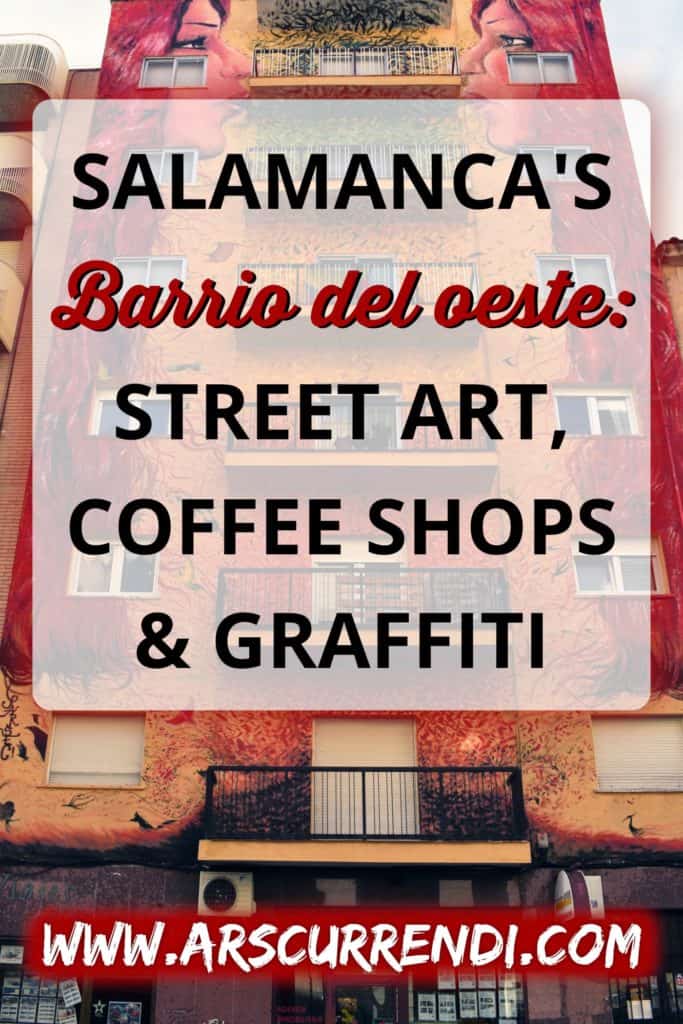
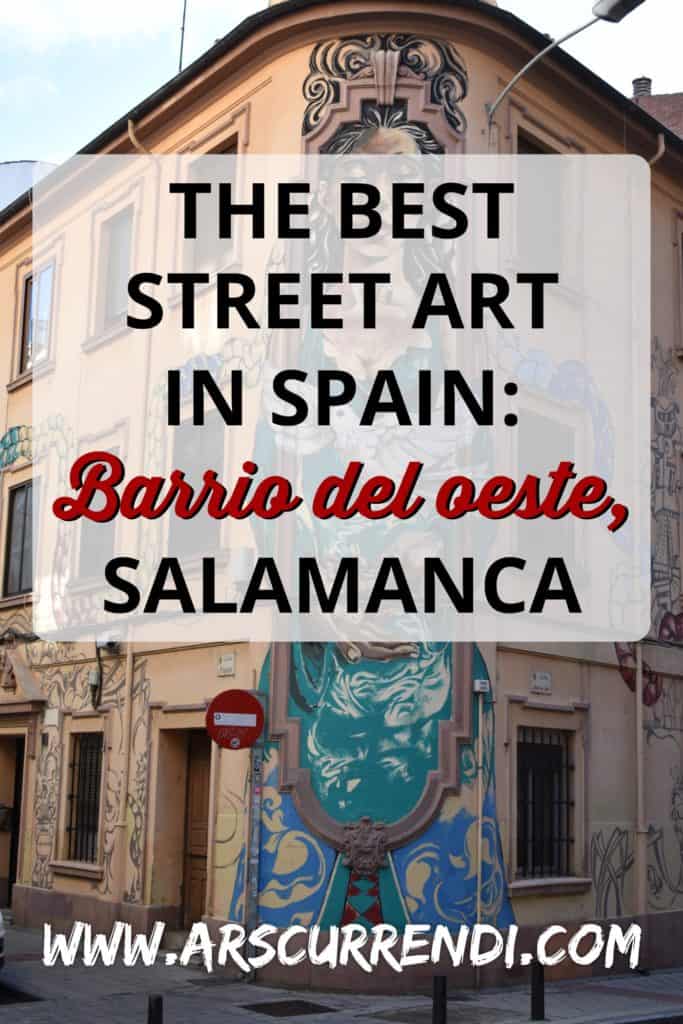
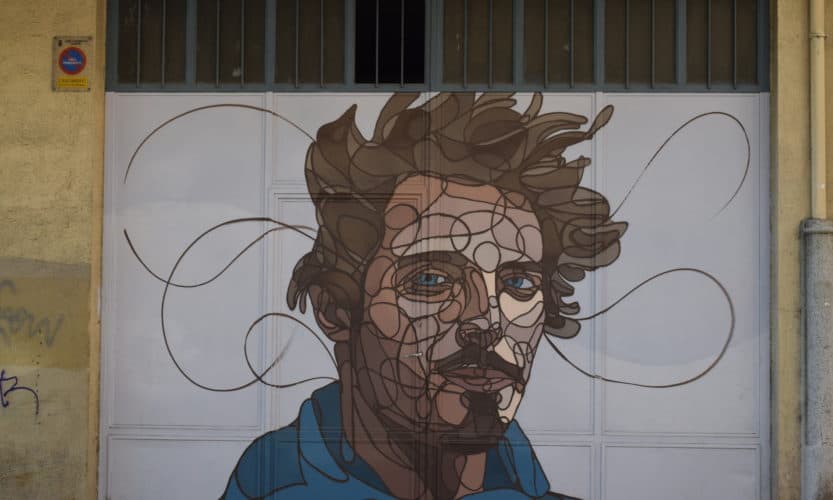
Everyone always says that a semester abroad is a life-changing event. After living in Spain for close to two months now, I’m starting to understand why. And I want to share it with you. Here’s a list of things I had never done before living in Spain.
I always thought that the cultural differences between Belgium and Spain were relatively small – and I was right. Nevertheless, living on your own in a foreign country can make you experience things you never thought you’d experience.
I know this list of events might seem trivial or unworthy of receiving any kind of attention, but to me, they’re special things. So, without any further ado, here are the things I did for the first time during my semester in Spain.
I still live at home with my parents, so laundry isn’t really something I usually do. I have to admit, the first time I did laundry here, I Skyped my mom to be sure that I was doing everything correctly. (Mom, if you’re reading this: thank you!)
Extending on the previous item on the list, a couple of weeks ago marked the first time I hung out my clean laundry after a night in the city. You might be thinking “Why would anyone do that instead of just going to bed?”, but I had my reasons.
You see, in that batch of laundry was one of my shirts that I needed the next day. When I came home, I suddenly realized that I would need the shirt, so I started hanging out my laundry, in the hopes that it would be dry by the time I woke up. And it was.
The climate where I’m staying is kind of special. It’s really hot in the summer (all the way through to the beginning of October), but then it gets really cold after that. So, my first month or so here, I experienced the best weather I’d ever experienced. It actually didn’t rain for a whole month. In Belgium, we’re lucky if we get a week without any rain.
In Belgium, I go everywhere by bike or by public transport. Here, things are a little different. Before I arrived in Spain, I was planning on renting a bike for the semester so I could get everywhere faster. Upon my arrival, I quickly realized that there were barely any bicycles going around here, so I decided to hold off on the whole renting a bike thing.
Now, I’m walking literally everywhere. I can get anywhere I need to be within 15 minutes, so I really see no reason for any other mode of transport.
I mean, yes, I have friends in Belgium and I love them with all my heart. It’s just that, here in Spain, everything is different. I don’t go home in the weekend, I have to be 100% independent. I think that’s part of the reason why I meet up with my new friends here more often.
There’s always something to do. An Erasmus organization planning trips to neighbouring cities. A group of friends getting together for dinner. Some promotion at the local movie theatre. I don’t want to miss out on all of this, so it feels like my social life here is way more lively than it was in Belgium.
The stores here are mostly the same as in Belgium, with one big, obvious difference: everything is in Spanish. Asking an employee where I can find red beans, communicating at the checkout, … My Spanish is pretty good, but I don’t feel confident enough to live my entire life speaking it.
Also, there is literally not a single store here that sells sour cream. I need sour cream, people.
This may seem like a stab at the people I know back in Belgium, but I promise, it’s not. I’m intensely happy here. I’m not saying my friends and family in Belgium aren’t good enough to make me happy, but hear me out.
Virtually everyone who has ever gone on a semester abroad says it was the time of their life. I feel like I’ve been in Spain long enough to understand what they’re talking about.
As an exchange students, it’s ridiculously easy to make new friends. After all, you pretty much only hang out with other exchange students, which means that everyone knows how you’re feeling and everyone is in the same boat.
The fact that you’re sharing unforgettable experiences with people you’ve only known for a couple of weeks is honestly mind-blowing to me. It feels as if you’ve been friends for ages, for some reason. It’s difficult to explain.
_________________________________________
I know it’s been a long time since I’ve posted anything on here, and I’m very sorry for that. It’s been incredibly busy here, and I haven’t really had a lot of time to update the blog.
I hope this post can answer some of your questions and maybe even entertain you a little bit. I had a lot of fun writing it, so I’d be a tad disappointed if you didn’t enjoy reading it just a little bit.
There are no pictures in this post for obvious reasons, but the next post will have images again, I promise.
In case you haven’t seen it yet, check out my new video of our trip to Segovia and Ávila!
As always, thanks for reading!
-S
Design by NXNW.